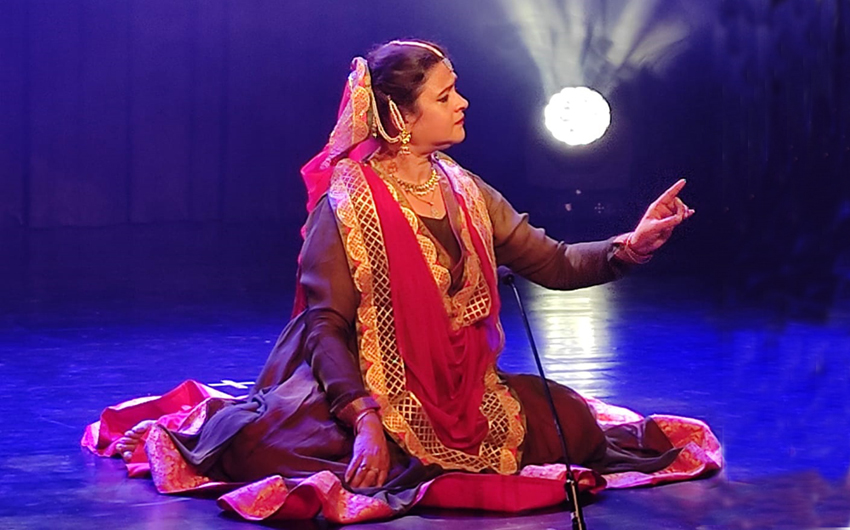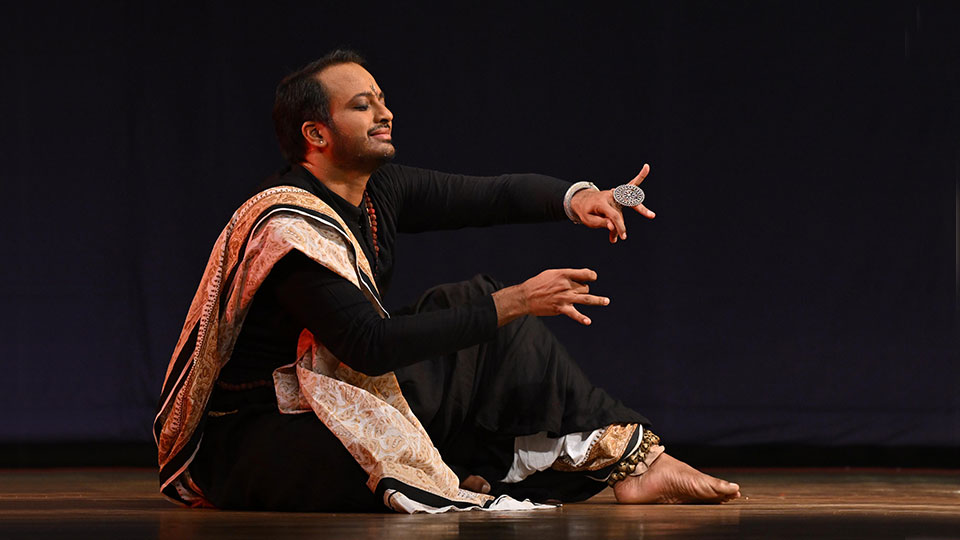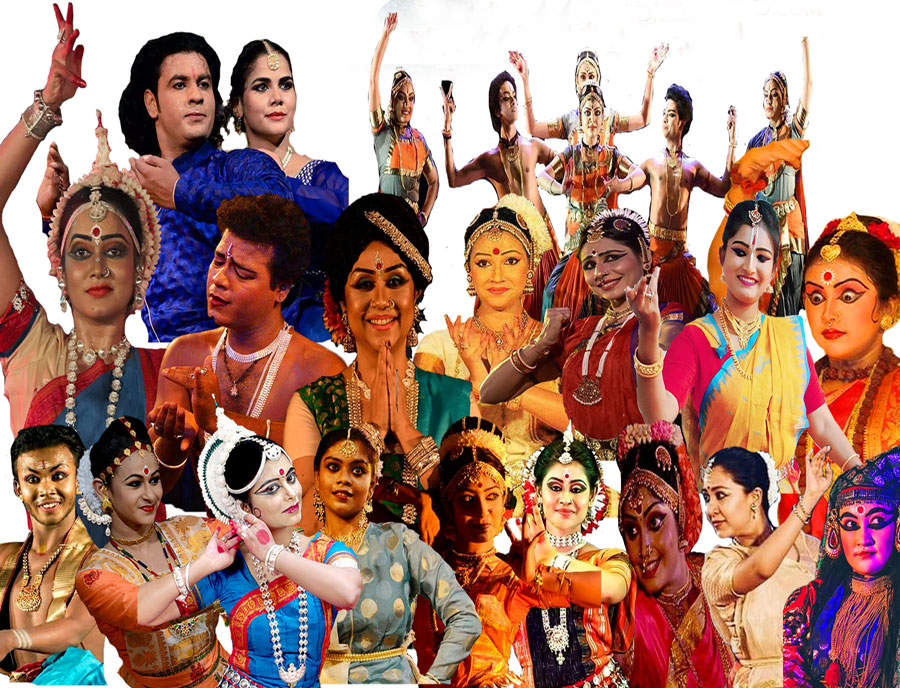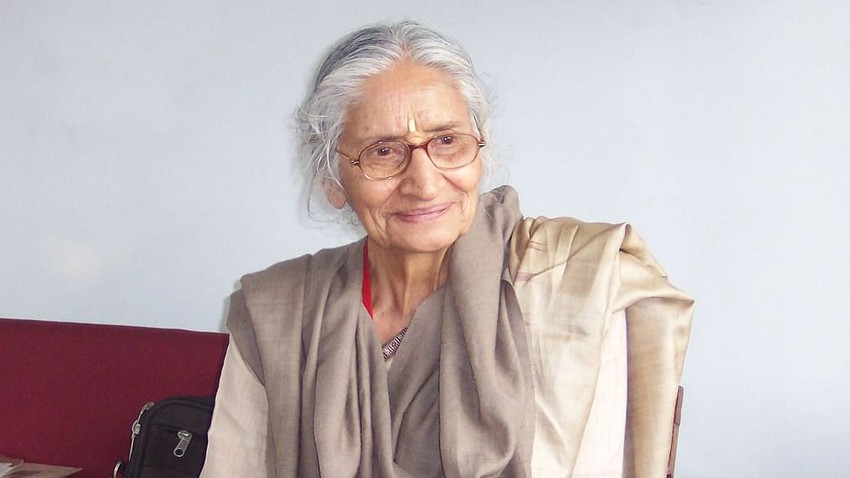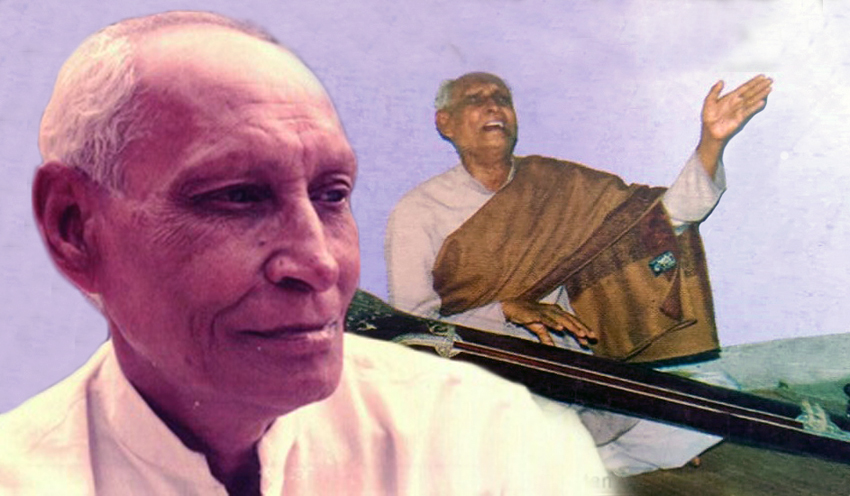A woman waiting for her lover in intense trance is the main bloodline in Ghalib’s poetic oeuvre. Rani Khanam’s dance tribute to the Urdu poet aptly stated the connection of waiting and endless waiting in the world of one-sided love and self-esteem (ana) Even as Sakhi and mina, cover most of Urdu Shero Shayari, after numerous rounds of stories around liquor is part of the Urdu poetry dictum. The alcoholic stupor in a frenetic adornment and then dishevelled illusion and the pining for the meeting was the opening feeling that Rani Khanam transformed the audience in the Zikr-e-Ghalib, 1857 recital under the Kathak Kendra premises in Delhi. The lines were
मुद्दत हुई है यार को मेहमान किये हुए
जोश-इ-क़दह से बज़्म चरागाँ किये हुए
For the next refrain, Rani Khanam chose to show undressing by the lover before courtship in alaap in raag Bageshri where she was peeping into the sufiana andaz of Ghalib’s mind.
फिर गर्म-नाला हाय शरार-बार है नफास
मुद्दत हुई है सैर-इ-चरागाँ किये हुए
That love is transient and lamentation in love leads to few snatched moments in love. The dancer led us through the exhilarating emotion of receiving the lover at doorstep and opening up the amorous side to their relationship.
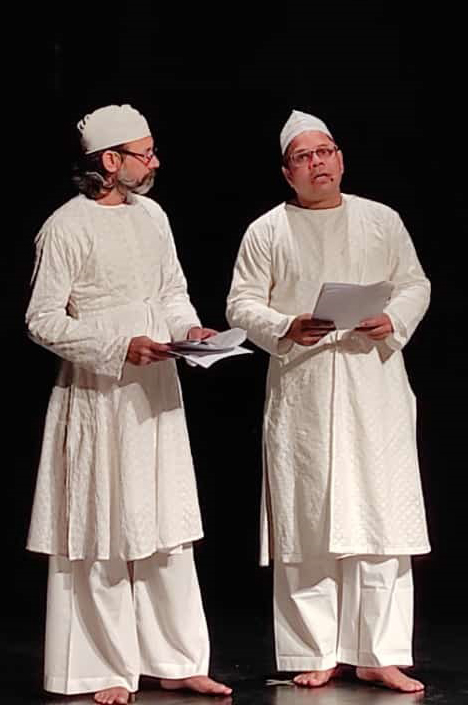
The metaphors were explained in common man’s terms before the recital by two Dastaangois in anecdotes on Ghalib’s life. One such incident was how Ghalib was termed a kaffir when he was caught gambling in the month of Ramzan. As he was taunted by a wise man he said he is the shaitan (wicked man) who is going against the traditions. In the rebellion phase of 1857, he saved his rented house from being looted only on the basis that he was witty and was loved by his followers. He however recorded all his views and those strong words in his Khatoot (letters written to various contemporaries). He lived all his life in rented houses and without paying the rent for months in Lucknow, Delhi and briefly in Banares.
The three ghazals chosen from Ghalib’s poetry for the day demanded a dig into the old age culture and brought us anecdotal details by dastaangois Syed Shadab Hussain and Rajesh Kumar in between performances. Students of Rani Khanam led by Shikha Sharma also gave an evocative presentation of Ghalib’s ghazal. It was a visual treat to witness six young Kathak dancers of the Lucknow repertoire giving meaning to the ghazal. The poignant visual of dancers repeatedly opening the windows to receive their lovers was the most arresting moment in the presentation. The symmetry of lights and ochre costumes added the flavour of pining in Ghalib’s words and mesmerized the performance.
ये हम जो हिज्र में दीवार-ओ-दर को देखते है
कभी सबा को कभी नामःबार को देखते है
वो आए घर में हमारे,खुदा की कुदरत है
कभी हम उनको, कभी अपने घर को देखते है
नज़र लगे न कहीं उसके दस्त-ओ-बाजू को
ये लोग क्यूं मेरे ज़ख़्म जिगर को देखते है,
The sheer madness of love and longing is a trademark only Ghalib is capable of expressing in a unique way and what Rani Khanam interpreted in an extension of his thoughts.
The slice of her own pain oozed out in the lines of phakiri and the breaking of mirror juxtaposed against breaking of poetic trance.
आह को चाहिए एक उम्र असर होने तक
कौन जीता है तेरे ज़ुल्फ़ के सर होने तक
आशिक़ी सब्र तलब और तमन्ना बेताब
दिल का क्या रँग करूँ खून-ए-जिगर होने तक
हम ने माना के तग़कुल न करोगे लेकिन
खाक हो जाएंगे हम तुम को खबर होने तक
In the last piece, Rani Khanam created the setting of holy waters of Banaras in which she explained that in the river Ganges in Banaras, one side you see a diya being floated for a pious living and in another bank the ghat is full of burning of dead bodies. Same way, Ghalib displayed the brief stay we have in this world and the progress we make leading the years. The growth of a man in various stages looking as a childhood playing catch the ball game to watching the moon-like face of his beloved in youth for hours. But the end is always without any noise. For someone who is responsible for teaching dance to socially disabled persons, Rani Khanam, an iconic Kathak dancer of our times deserves a special mention in taking up meaningful challenges in dance choreography.



